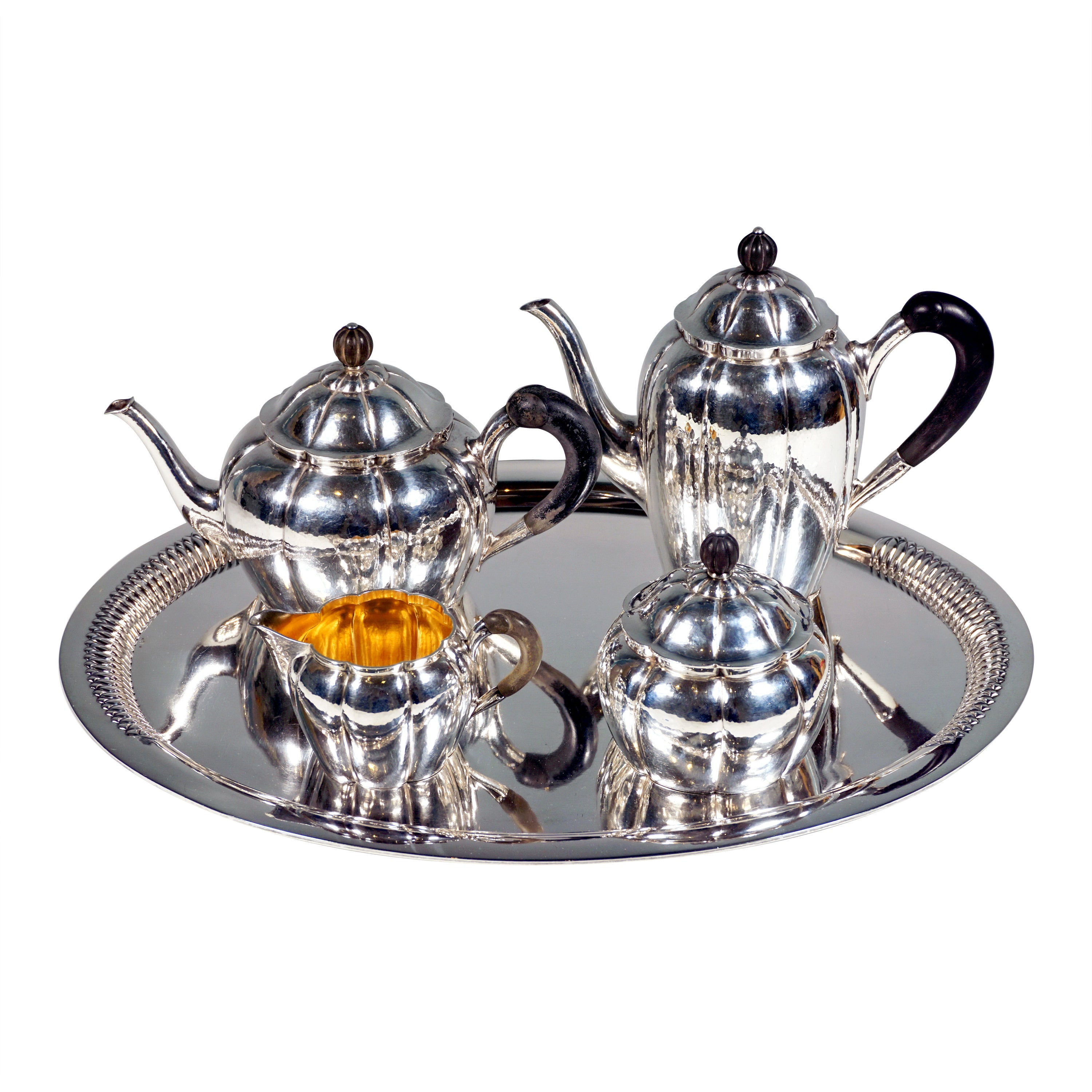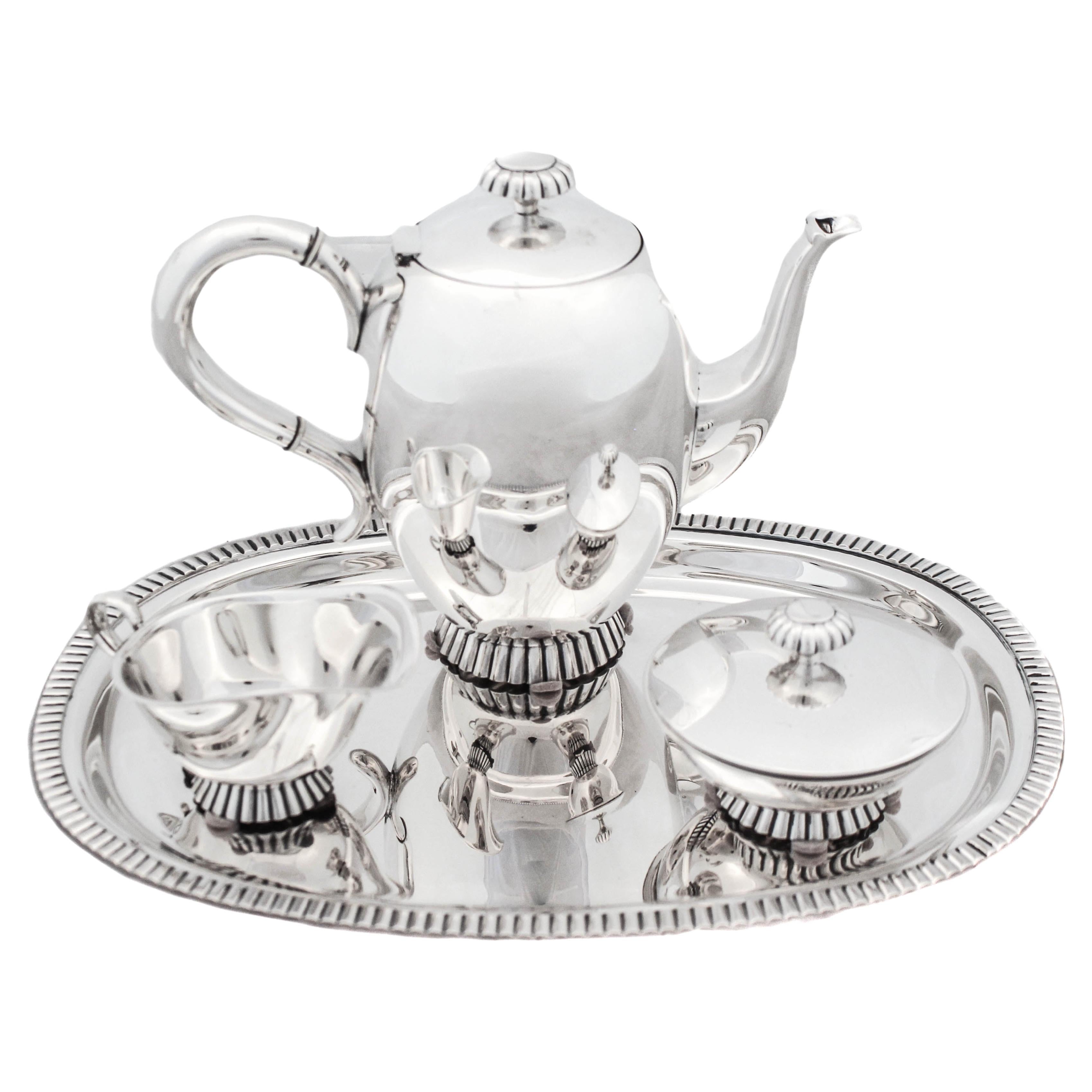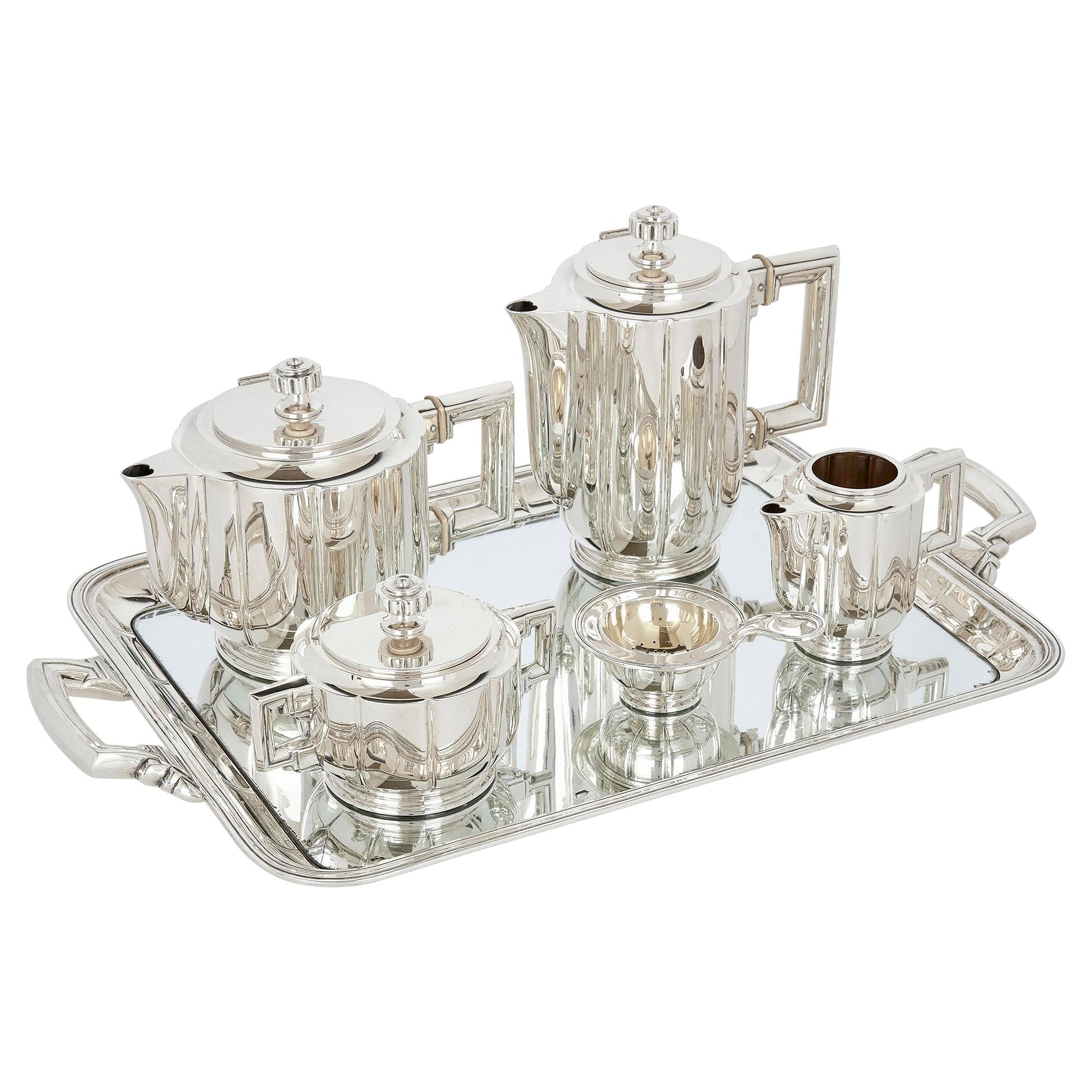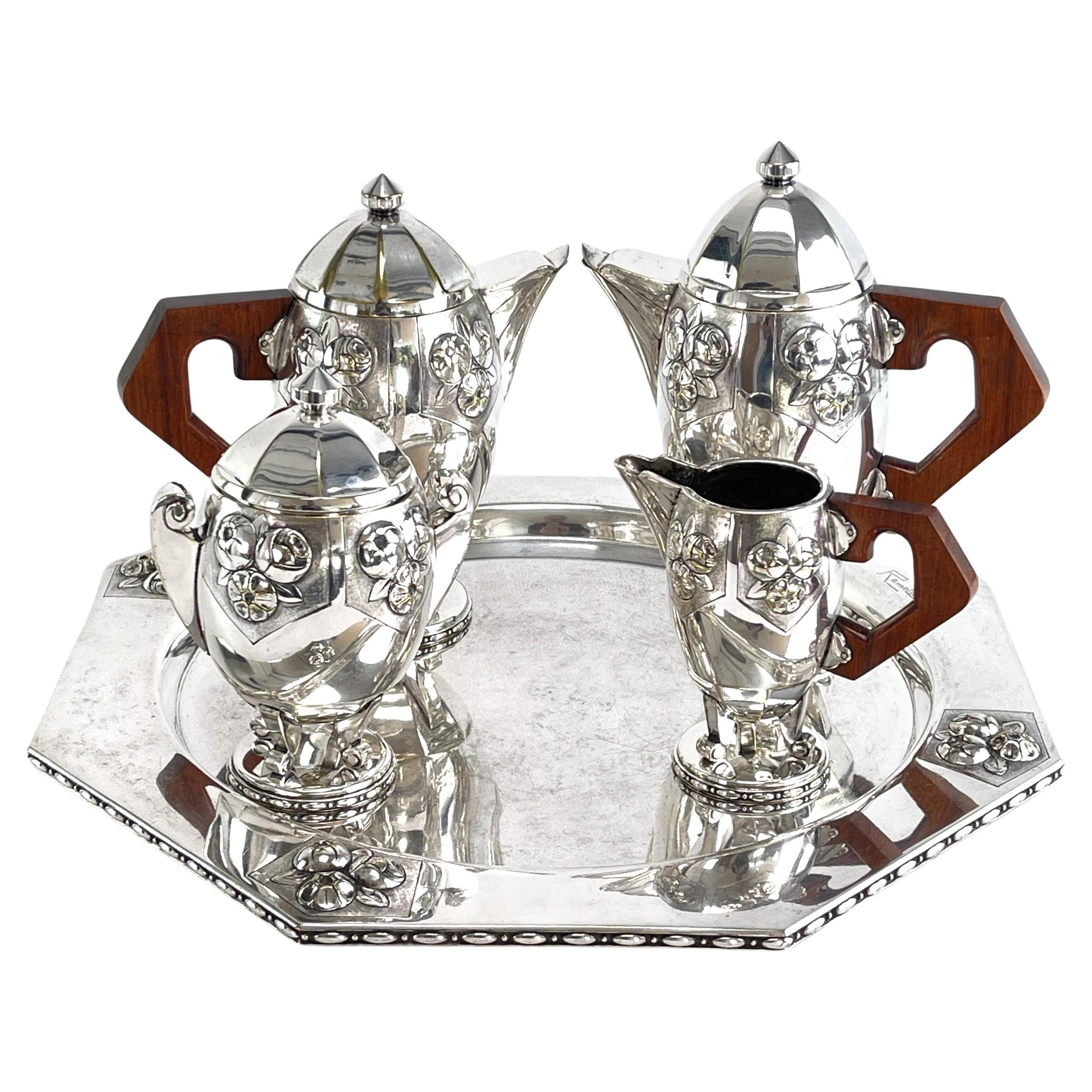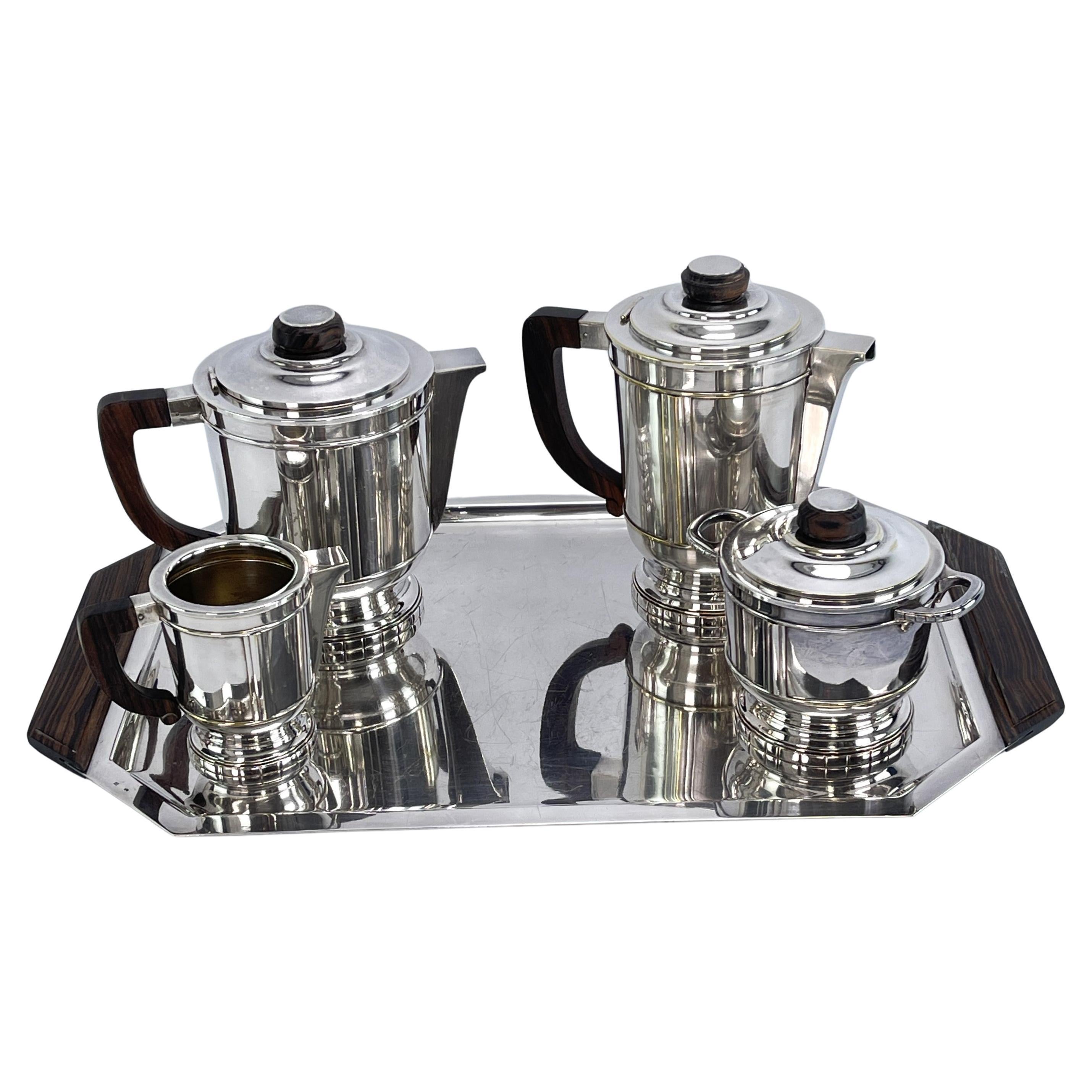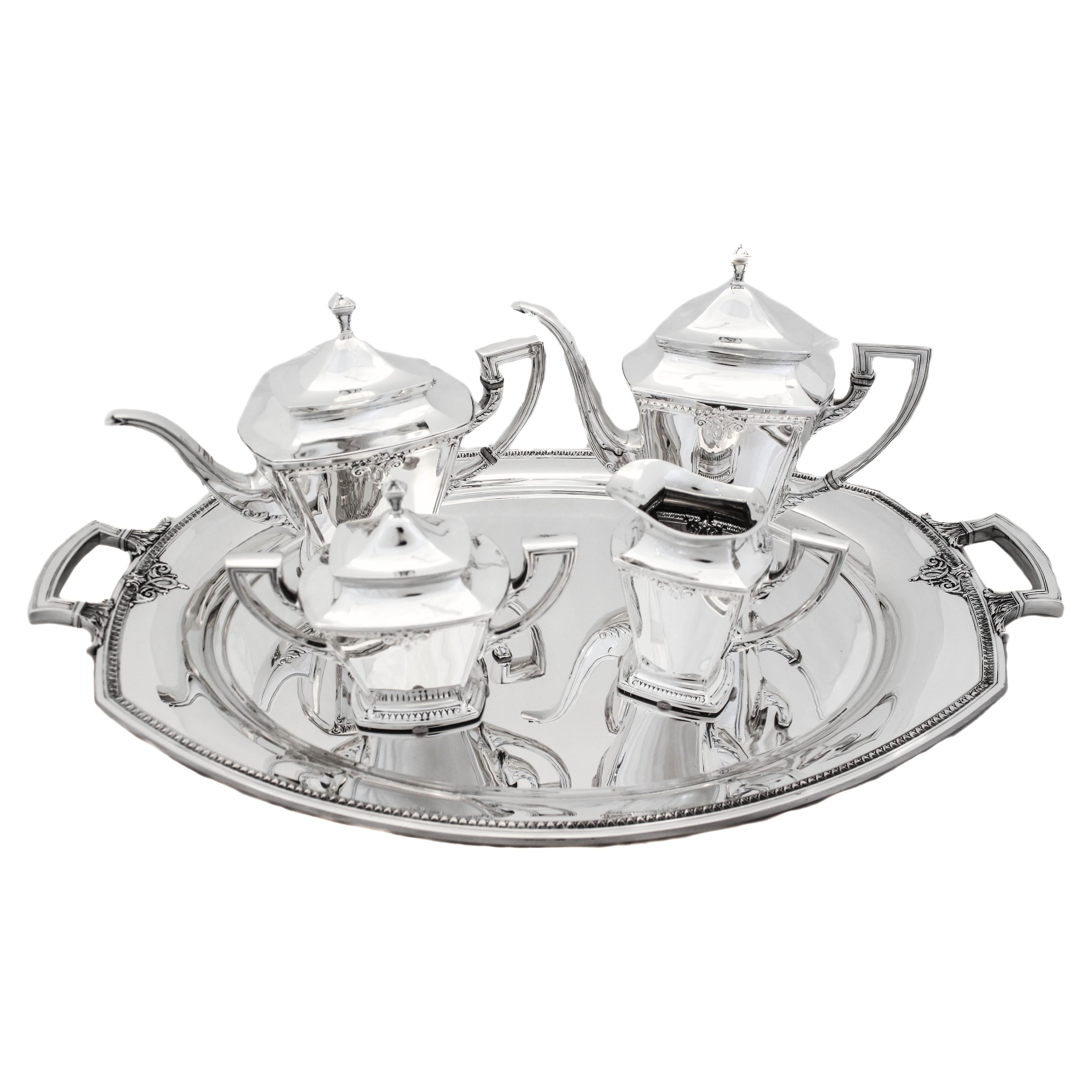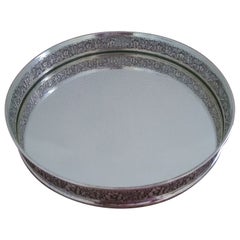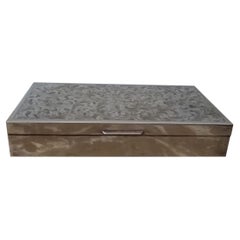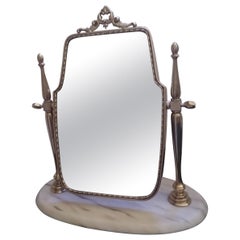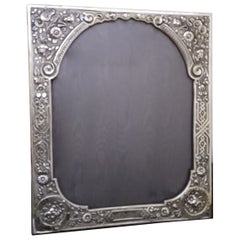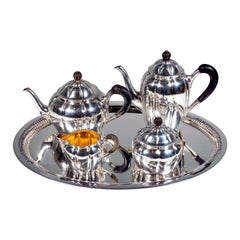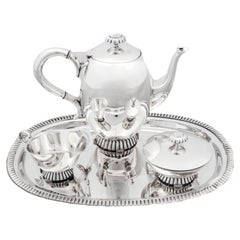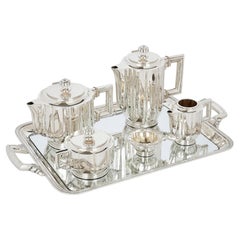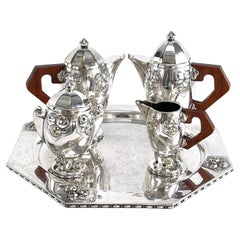Items Similar to Cesa 1882 Art Deco Sterling Silver Coffee & Tea Set on Tray
Video Loading
Want more images or videos?
Request additional images or videos from the seller
1 of 22
Cesa 1882 Art Deco Sterling Silver Coffee & Tea Set on Tray
$18,877.77
£14,353.75
€16,000
CA$26,406.69
A$28,820.59
CHF 15,137.29
MX$350,039.12
NOK 189,944.32
SEK 178,257.47
DKK 121,869.20
About the Item
Cesa 1882 sterling silver 06-piece tea and coffee set in an elegant, geometric design reminiscent of the Art Deco style, consisting of:
a stand with a burner, measuring cm 15 x 13 x 8.5h
a sugar bowl cm 12 x 10 x 12h
a creamer cm 16 x 8.5 x 12h
a coffee pot cm 25 x 10 x 21h
a tea pot cm 26 x 12 x 21h
a two-handled tray cm 58x 37 x 2h
It was in 1882, in Alessandria, that the history of Cesa, the most prestigious Italian silverware brand, began. A fascinating history made of art, tradition, style, quality , successes, clear ideas, entrepreneurial skills and creativity. In 1898 the “CESA flatware” was born, a product characterized from the very beginning by the utmost attention to high quality craftsmanship.
Today, as 120 years ago, a CESA 1882 branded cutlery requires 38 processing steps to achieve the result of excellence.
It was 1920 when, at the end of World War I, with the return to the pleasures of good living and a taste for beautiful things, Cesa 1882 became the official supplier of the Royal House of Savoy with the “Rubans floral” service. This is recognition of the prestige acquired by the brand.
Since 1950, the most prestigious banquets held in Rome, at the Quirinale are served with Cesa 1882 cutlery and silverware. From Mikhail Gorbachev to Queen Elizabeth of England, heads of state and monarchs visiting our country have been dining at the Quirinale on tables set with “Quirinale” service for over seventy years.
- Creator:Cesa 1882 (Maker)
- Dimensions:Height: 0.79 in (2 cm)Width: 22.84 in (58 cm)Depth: 14.57 in (37 cm)
- Style:Art Deco (Of the Period)
- Materials and Techniques:
- Place of Origin:
- Period:
- Date of Manufacture:1920s
- Condition:the set has a lovely vintage patina although it can be polished on request.
- Seller Location:Catania, IT
- Reference Number:1stDibs: LU10074245372112
About the Seller
No Reviews Yet
Vetted Professional Seller
Every seller passes strict standards for authenticity and reliability
1stDibs seller since 2024
- ShippingRetrieving quote...Shipping from: Catania, Italy
- Return Policy
Authenticity Guarantee
In the unlikely event there’s an issue with an item’s authenticity, contact us within 1 year for a full refund. DetailsMoney-Back Guarantee
If your item is not as described, is damaged in transit, or does not arrive, contact us within 7 days for a full refund. Details24-Hour Cancellation
You have a 24-hour grace period in which to reconsider your purchase, with no questions asked.Vetted Professional Sellers
Our world-class sellers must adhere to strict standards for service and quality, maintaining the integrity of our listings.Price-Match Guarantee
If you find that a seller listed the same item for a lower price elsewhere, we’ll match it.Trusted Global Delivery
Our best-in-class carrier network provides specialized shipping options worldwide, including custom delivery.More From This Seller
View AllSilver Rimmed Italian Circular Tray
Located in Catania, IT
Simple elegance: 1960s Italian sterling silver 800 tray with mirror centre.
Stamped 800
Category
Vintage 1960s Italian Mid-Century Modern Sterling Silver
Materials
Sterling Silver
1950s Italian Decorative Box in Silver
Located in Catania, IT
This mid-century decorative box displays the best of Italian craftmanship The exterior features a textured Sterling silver 800 surface reflecting the Italian meticulous attention t...
Category
Vintage 1950s Italian Mid-Century Modern Decorative Boxes
Materials
Sterling Silver
1950s Italian Vanity In Brass with Marble Base
Located in Catania, IT
Wonderful table mirror in brass, this elegant mid-century table or makeup mirror was designed and produced in Italy during the 1950s.
The mirror has a solid brass structure with two...
Category
Vintage 1950s Italian Mid-Century Modern Table Mirrors
Materials
Carrara Marble, Brass
Large Decorative Silver Photo Frame
Located in Catania, IT
A large, hand made, impressive and fine quality antique photograph frame with solid silver border decorated with repeating sections foliage and blossoms. The back has been recovered ...
Category
Antique Early 1900s Italian Art Nouveau Picture Frames
Materials
Sterling Silver
Cenedese Murano Jewelry Box, 1950s
By Giovanni Cenedese
Located in Catania, IT
Murano jewelry box by Giovanni Cenedese.
Label is still on the box: Murano Cenedese Vetri.
This absolutely gorgeous jewelry box showcases blue Murano glass .Gilt metal bands on the b...
Category
Vintage 1950s Italian Hollywood Regency Jewelry Boxes
Materials
Murano Glass
Pair of Lacquered Side Tables/Nightstands by Frigerio, Italy 1960s
By Luciano Frigerio
Located in Catania, IT
A pair of unique side tables by Luciano Frigerio.
The tables are in white lacquered wood with chrome handles on drawers and doors.
In excellent vintage conditions
Category
Vintage 1960s Italian Hollywood Regency Side Tables
Materials
Wood
You May Also Like
Art Déco Silver 5-Piece Coffee & Tea Set with Tray, Around 1920
Located in Vienna, AT
Elegant 5-piece silver centerpiece consisting of a coffee pot, teapot, milk jug, sugar bowl and a tray.
Bulbous, raised vessels, narrowing again towards the opening, with a vertical...
Category
Vintage 1920s Swiss Art Deco Sterling Silver
Materials
Silver
Sterling Silver Art Deco Tea Set
Located in Brooklyn, NY
We are just gaga over this sterling silver Art Deco tea set!! It has an understated elegance that is so chic. Bauhaus design is often ...
Category
Vintage 1920s Austrian Art Deco Sterling Silver
Materials
Sterling Silver
Art Deco Spanish Silver Coffee and Tea Set
Located in London, GB
Art Deco Spanish silver coffee and tea set
Spanish, c. 1930
Tray: height 3cm, width 56cm, depth 35cm
Milk jug: height 10cm, width 13cm, depth 8cm
...
Category
Early 20th Century Spanish Art Deco Tea Sets
Materials
Silver
$20,122 / set
Beautiful ART DECO coffee set tea set signed RameLPa silver plated
Located in Bingen am Rhein, RP
Coffee/tea set - 1920s
This coffee set from the 1920s is in the typical style of the streamline modern. It includes a coffee pot, teapot, sugar bowl, creamer and a handled tray.
Th...
Category
Vintage 1920s French Art Deco Tea Sets
Materials
Metal, Silver Plate
$1,179 Sale Price / set
20% Off
Beautiful ART DECO coffee set tea set silver plated, 1930s
Located in Bingen am Rhein, RP
Coffee/tea set - 1930s
This coffee set from the 1930s is in the typical style of the streamline modern. It includes a coffee pot, teapot, sugar bowl, creamer and a handled tray.
Th...
Category
Vintage 1920s French Art Deco Tea Sets
Materials
Metal, Silver Plate
Sterling Silver Art Deco “Trianon” Tea Set
By International Silver
Located in Brooklyn, NY
We are absolutely delighted to offer this Art Deco tea set by the International Silver Company in the “Trianon” pattern. Designed at t...
Category
Vintage 1920s American Art Deco Sterling Silver
Materials
Sterling Silver
$21,000 / set
More Ways To Browse
Art Deco Sterling
House Of Savoy
Tiffany Hampton
Used Furniture Plymouth
Van Kempen Begeer
Vintage Baileys Glasses
William Marshall
Antique Nutmeg Graters
Antique Oil And Vinegar Cruet
Antique Propelling Pencil
Antique Scimitar
Antique Silver Butter Knife
Antique Sterling Serving Fork
Antique Sterling Silver Scissors
Antique Sterling Walking Cane
Anton Michelsen Spoon
Art Nouveau Coffee Pot
Baltimore Antiques
